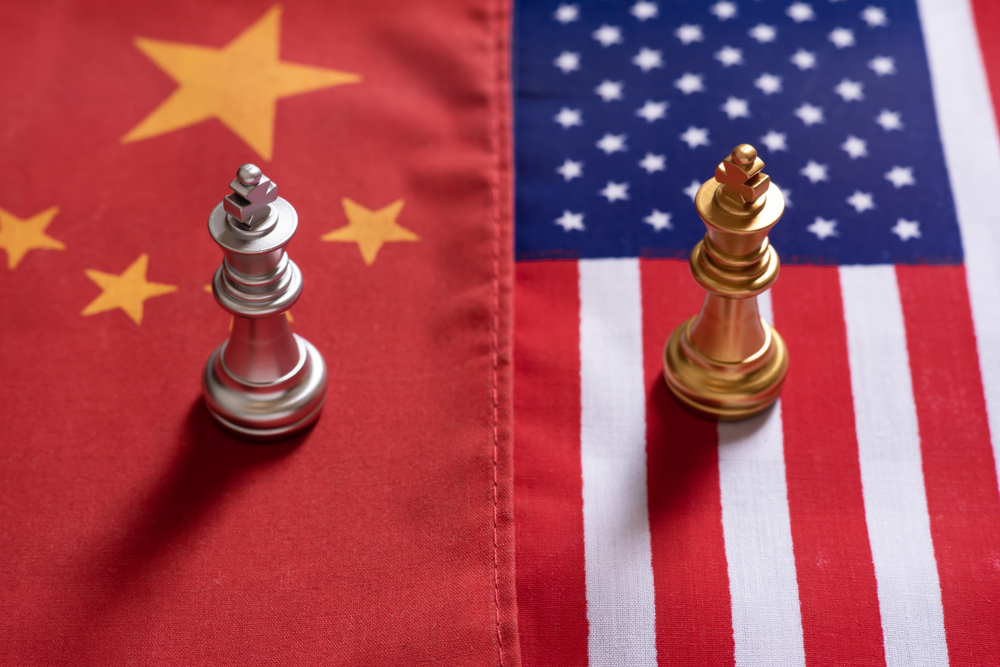Tariff Talks 2025: Expana’s Weekly Rundown #32 – foodmarket.com

Analysis of US-China Trade Policy and Sustainable Development Goal Implications
Executive Summary of Presidential Statement
A statement from the U.S. President indicated a proposed 100% additional tariff on Chinese goods, a measure described by the President as “not sustainable.” The policy was framed as a response to perceived unfair trade practices. Despite the adversarial rhetoric, the President expressed confidence in the future of the bilateral relationship and noted a positive personal rapport with the Chinese leader, with a meeting anticipated at an upcoming summit of Asia-Pacific leaders.
Impact on Global Economic and Social Sustainability
The proposed trade measures have significant implications for several United Nations Sustainable Development Goals (SDGs), particularly those concerning economic stability, equality, and international cooperation.
SDG 8: Decent Work and Economic Growth
- Economic Instability: The imposition of substantial tariffs can disrupt global supply chains, create market volatility, and hinder progress towards sustained and inclusive economic growth.
- Employment Risks: Trade disputes may threaten jobs in sectors reliant on international trade in both nations, undermining the goal of full and productive employment for all.
SDG 10: Reduced Inequalities
Trade policies can have a profound effect on inequality within and among countries. Key considerations include:
- Consumer Impact: Tariffs on imported goods can lead to increased prices for consumers, disproportionately affecting low-income households and potentially widening economic disparities.
- Global Inequality: Such measures can disrupt the economic development of trading partners, impacting progress on reducing inequality between nations.
SDG 16 & SDG 17: Peace, Justice, Strong Institutions & Partnerships for the Goals
- Undermining Global Partnerships (SDG 17): Unilateral tariff actions challenge the spirit of multilateral cooperation and global partnership essential for achieving the 2030 Agenda. They can weaken the international trading system governed by established institutions.
- Threats to Peaceful Relations (SDG 16): Characterizing a major trading partner as an “adversary” and emphasizing a “strength”-based approach can escalate international tensions, moving away from the goal of promoting peaceful and inclusive societies.
- Opportunity for Dialogue: The planned meeting between the two leaders presents a critical opportunity to reinforce diplomatic channels and partnerships, aligning with the principles of SDG 17 to resolve disputes and strengthen global cooperation.
Analysis of Sustainable Development Goals in the Article
1. Which SDGs are addressed or connected to the issues highlighted in the article?
-
SDG 8: Decent Work and Economic Growth
The article’s focus on tariffs and international trade directly relates to global economic activities. The statement that the proposed 100% tariff is “not sustainable” touches upon the core principle of SDG 8, which is to promote sustained, inclusive, and sustainable economic growth. Trade disputes of this magnitude can disrupt global supply chains, affect employment, and hinder overall economic stability and growth.
-
SDG 16: Peace, Justice and Strong Institutions
This goal aims to promote peaceful and inclusive societies and build effective, accountable institutions. The article highlights a breakdown in cooperative international relations through phrases like “China has ripped us off” and describing China as a “very strong adversary.” This confrontational language and the unilateral tariff action undermine the spirit of peaceful international dialogue and the strong global institutions that govern trade.
-
SDG 17: Partnerships for the Goals
SDG 17 emphasizes the need for global partnerships to achieve sustainable development. The article discusses a significant departure from cooperative international trade policy. The proposed unilateral “100% additional tariffs” directly contradicts the principles of a multilateral, rules-based trading system, which is a key component of global partnership for sustainable development.
2. What specific targets under those SDGs can be identified based on the article’s content?
-
Target 17.10
Under SDG 17, Target 17.10 is the most directly relevant: “Promote a universal, rules-based, open, non-discriminatory and equitable multilateral trading system under the World Trade Organization.” The article describes a proposed unilateral tariff of 100%, which is a protectionist measure that fundamentally opposes the principles of an open, non-discriminatory, and rules-based multilateral trading system.
3. Are there any indicators mentioned or implied in the article that can be used to measure progress towards the identified targets?
-
Implied Indicator for Target 17.10
The article provides a specific value that can be used as an indicator. The “100% additional tariffs” is a direct measure of a trade barrier. This figure directly relates to SDG Indicator 17.10.1, which is the “Worldwide weighted tariff-average.” The proposed policy would drastically increase the tariff average between the two countries, indicating a move away from the goal of an open multilateral trading system. While the article doesn’t provide the overall weighted average, it provides the key data point of the tariff rate itself.
SDGs, Targets, and Indicators Summary
| SDGs | Targets | Indicators |
|---|---|---|
| SDG 17: Partnerships for the Goals | 17.10: Promote a universal, rules-based, open, non-discriminatory and equitable multilateral trading system under the World Trade Organization. | The proposed “100% additional tariffs” is a direct measure that contravenes this target and would negatively impact Indicator 17.10.1 (Worldwide weighted tariff-average). |
| SDG 8: Decent Work and Economic Growth | The article’s content is relevant to the overall goal of promoting sustainable economic growth, but no specific target is explicitly mentioned. The imposition of tariffs disrupts global trade, a key driver of economic growth. | The statement that the tariff is “not sustainable” implies a negative impact on sustainable economic activity, but does not provide a specific measurable indicator. |
| SDG 16: Peace, Justice and Strong Institutions | The article’s content relates to the goal of promoting peaceful international relations and strong global institutions. | The qualitative statements “ripped us off” and “strong adversary” serve as informal indicators of strained diplomatic and economic relations between nations, undermining the spirit of this goal. |
Source: foodmarket.com
What is Your Reaction?
 Like
0
Like
0
 Dislike
0
Dislike
0
 Love
0
Love
0
 Funny
0
Funny
0
 Angry
0
Angry
0
 Sad
0
Sad
0
 Wow
0
Wow
0
















































:focal(1500,1000)/https://media.globalcitizen.org/a6/9a/a69a4720-d8a1-4715-b596-18738d03c05c/rotary_polio_hero_image.jpg?#)







/countries/sri-lanka/photo-credit---dmc-sri-lanka.tmb-1200v.jpg?sfvrsn=dc298bcc_1#)

















